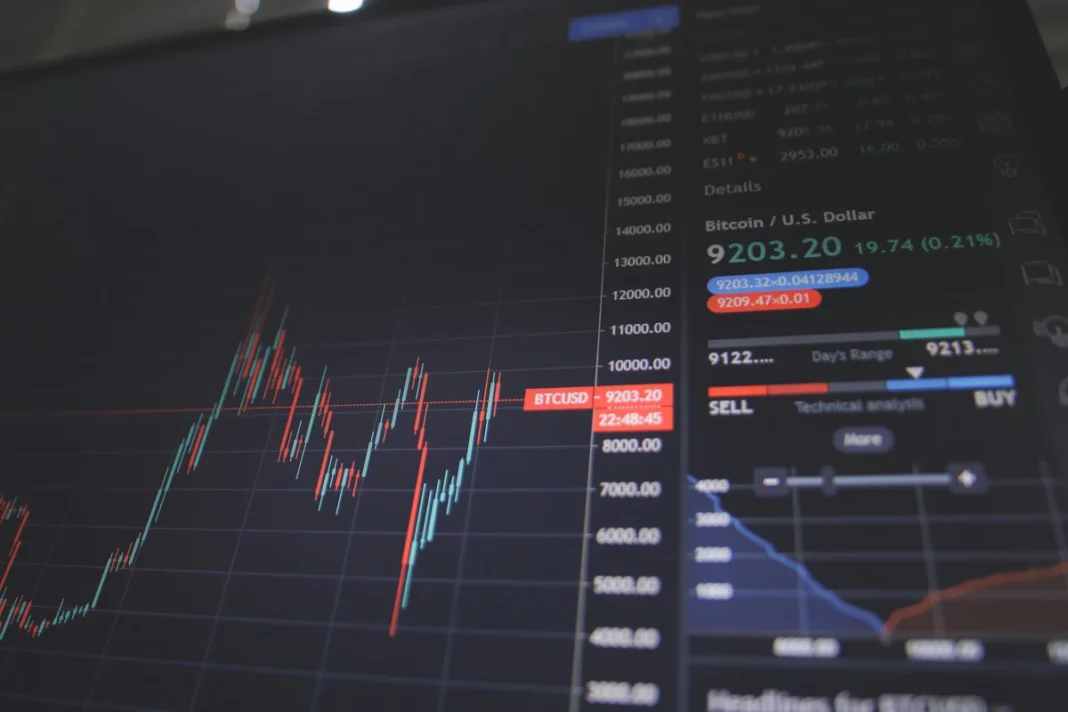The Nasdaq Composite, a bellwether for technology and fintech stocks, experienced a significant correction in early 2025, dropping over 10% from its all-time highs. This dip sent ripples through the investment community, prompting analyses from leading financial platforms like Fintechzoom .com FINTECHZOOM. Known for its real-time data and insights on markets, stocks, and cryptocurrencies, Fintechzoom .com likely provided a detailed breakdown of the factors driving this downturn. However, while their coverage was robust, it may have overlooked critical nuances that are essential for a comprehensive understanding of the event.
At Fintechzoom Insights Home, we aim to go beyond the headlines, offering deeper perspectives to help investors navigate complex market dynamics. In this blog, we’ll unpack Fintechzoom.com’s analysis of the Nasdaq dip, highlight what they might have missed, and provide actionable insights to empower your investment decisions. From interest rate complexities to global market influences, we’ll explore the full picture of this market correction.
Fintechzoom .com’s Analysis: The Core Points
Fintechzoom .com is a go-to platform for investors seeking updates on financial markets, including the Nasdaq, Dow Jones, and cryptocurrencies FintechZoom Pro. Their analysis of the Nasdaq dip in early 2025 likely focused on several key drivers, based on their typical coverage of market trends and the economic context of the time:
- Economic Slowdown: Fintechzoom .com probably noted that U.S. economic indicators, such as GDP growth and consumer spending, showed signs of moderation. Inflation, while declining from its 2024 highs, remained above the Federal Reserve’s 2% target, raising concerns about economic stability Nasdaq Q1 2025 Review.
- Geopolitical and Policy Uncertainty: Rising global tensions, coupled with domestic policy shifts, likely featured in their analysis. Potential tariffs and trade disputes under the new administration added volatility, particularly for tech-heavy indices like the Nasdaq, which are sensitive to global supply chains Coruzant Technologies.
- Federal Reserve’s Inaction: The Fed’s decision to pause rate adjustments in Q1 2025, alongside the administration’s focus on funding (lower rates) rather than boosting stock markets, may have been highlighted as a source of investor unease. This shift signaled a departure from policies supporting asset price growth Nasdaq Q1 2025 Review.
- Tech Sector Pressures: Fintechzoom.com likely pointed to specific challenges in the technology sector, which dominates the Nasdaq. For instance, Nvidia, a key player in AI infrastructure, saw its stock drop about 20% year-to-date by March 2025, driven by concerns over tariffs and overvaluation The Motley Fool.
This analysis aligns with Fintechzoom.com’s strength in providing real-time data and expert commentary, as seen in their coverage of Nasdaq trends and fintech innovations Blockchain Council. However, to fully equip investors, we need to explore additional factors that may have been underexplored in their report.
What Fintechzoom .com Might Have Missed
While Fintechzoom.com’s coverage was likely thorough, several critical aspects of the Nasdaq dip may not have received the attention they deserved. These gaps are crucial for understanding the full scope of the correction and its implications for investors, particularly those focused on fintech and technology. Below, we outline five key areas where their analysis could have been expanded:
1. Interest Rate Expectations: A Complex Signal
- What They Covered: Fintechzoom .com likely mentioned the Federal Reserve’s cautious stance and the administration’s funding focus, which could imply future rate cuts.
- What They Missed: The market’s reaction to potential rate cuts is not always positive. Lower interest rates can stimulate borrowing and investment, but they can also signal economic weakness, prompting sell-offs in growth stocks like those on the Nasdaq. For example, if the Fed cuts rates due to recession fears, it could erode confidence in tech companies’ high-growth projections FRED Economic Data.
- Why It Matters: Investors need to recognize that rate cuts are a double-edged sword. The anticipation of cuts in 2025 may have contributed to the dip by highlighting underlying economic vulnerabilities, a nuance that Fintechzoom .com may not have fully explored.
2. Regulatory Shifts: A Growing Concern for Fintech

- What They Covered: Policy uncertainty was likely noted, but the focus may have been on broad economic impacts rather than specific regulatory changes.
- What They Missed: The administration’s emphasis on funding over market stimulation could signal tighter regulations, particularly for fintech and tech companies. For instance, stricter rules on data privacy, fintech lending, or antitrust actions could impact Nasdaq-listed firms like Meta, Alphabet, or SoFi. These risks are especially relevant given the evolving regulatory landscape for cryptocurrencies, as discussed in our article on Crypto Regulation in the USA in 2025.
- Why It Matters: Fintech companies operate in a highly regulated environment, and changes could affect profitability and growth. A deeper dive into these risks would have added value for Fintechzoom.com’s audience.
3. Global Market Interconnectivity: Beyond U.S. Borders
- What They Covered: The analysis likely centered on U.S.-specific factors, such as domestic economic data and policy shifts.
- What They Missed: The Nasdaq is influenced by global market dynamics. A slowdown in China’s economy, for example, could reduce demand for U.S. tech products, impacting companies like Apple or Intel. Similarly, a strengthening Japanese yen could affect Japanese tech firms listed on the Nasdaq World Bank Global Economic Prospects.
- Why It Matters: Understanding global interdependencies is critical for assessing the Nasdaq’s resilience. A more global perspective would have provided investors with a broader view of risks and opportunities.
4. Investor Psychology: The Human Element
- What They Covered: Fintechzoom.com likely focused on fundamental drivers like economic data and policy.
- What They Missed: Market dips are often amplified by investor psychology. Fear of further losses can lead to panic selling, while confidence in a recovery can spark buying. Behavioral finance principles, such as loss aversion and herd mentality, play a significant role in market movements Investopedia Behavioral Finance.
- Why It Matters: Understanding these psychological factors can help investors predict market behavior and identify opportunities, such as buying during oversold conditions.
5. Long-Term Growth Prospects: Looking Beyond the Dip
- What They Covered: The immediate causes of the dip were likely the focus, with less emphasis on future potential.
- What They Missed: Many Nasdaq-listed companies, particularly in tech and fintech, have strong long-term growth prospects. Innovations in AI, blockchain, and digital payments continue to drive growth, as seen in companies like Nvidia, Microsoft, and PayPal. The dip may represent a buying opportunity for long-term investors, a point not fully explored by Fintechzoom.com.
- Why It Matters: Balancing short-term volatility with long-term potential is crucial for informed investing. Highlighting these opportunities could have provided a more optimistic outlook.
In-Depth Analysis: Bridging the Gaps
To provide a more complete picture, let’s explore each of these missed points in detail, drawing on additional research and insights.
Interest Rates: Navigating Mixed Signals
The Federal Reserve’s monetary policy is a critical driver of market performance. In early 2025, the Fed’s pause on rate adjustments and the administration’s funding focus suggested potential rate cuts. While Fintechzoom.com likely noted this, they may not have emphasized the mixed signals these cuts send. Lower rates can boost stock prices by reducing borrowing costs, but they can also signal economic weakness, particularly for growth stocks that dominate the Nasdaq.
For example, if the Fed cuts rates due to slowing GDP growth or rising unemployment, it could undermine confidence in tech companies’ ability to sustain high valuations. Data from FRED Economic Data shows that GDP growth slowed to 2.7% year-over-year in 2024, with early 2025 projections indicating further moderation. This context suggests that the Nasdaq dip was partly a reaction to fears of a broader economic slowdown, a nuance that deserves more attention.
Regulatory Shifts: A Fintech Focus
The administration’s policy shift toward funding could herald stricter regulations, particularly for fintech and tech sectors. For instance, enhanced data privacy laws or restrictions on fintech lending could impact companies like SoFi or Block, which are prominent on the Nasdaq. Our article on Winners and Losers in 2025 Crypto Regulations highlights how regulatory changes can create both risks and opportunities for fintech firms.
Fintechzoom.com’s fintech expertise makes it surprising that they didn’t delve deeper into these risks. For example, potential antitrust actions against tech giants like Alphabet could lead to market uncertainty, affecting the broader Nasdaq. Investors need to monitor these developments closely, as they could shape the sector’s trajectory in 2025 and beyond.
Global Market Influences: A Connected World
The Nasdaq operates within a global financial ecosystem. A slowdown in China’s economy, for instance, could reduce demand for U.S. tech exports, impacting companies like Apple, which derives significant revenue from China. Similarly, currency fluctuations, such as a strengthening Japanese yen, could affect Japanese tech firms listed on the Nasdaq World Bank Global Economic Prospects.
Fintechzoom.com’s U.S.-centric focus may have overlooked these global dynamics. For example, the Nikkei 225’s performance, which rose 1.04% on May 2, 2025 Yahoo Finance, suggests resilience in Asian markets that could influence U.S. investor sentiment. A more interconnected analysis would have helped investors anticipate these external pressures.
Investor Psychology: The Emotional Driver
Market movements are not solely driven by fundamentals; investor psychology plays a significant role. During the Nasdaq dip, fear of further losses likely led to panic selling, amplifying the decline. Conversely, if investors view the dip as temporary, it could trigger a rebound as bargain hunters step in Investopedia Behavioral Finance.
The 2022 tech sell-off offers a historical parallel: fear drove significant declines, but many stocks rebounded in 2023 and 2024 as sentiment improved. Fintechzoom.com could have incorporated behavioral finance insights to explain why the dip occurred and how investors might react, helping readers navigate volatility more effectively.
Long-Term Growth: Opportunities Amid Volatility
Despite the dip, the Nasdaq remains a hub of innovation. Companies like Nvidia, Microsoft, and Amazon are leaders in AI, cloud computing, and digital payments—sectors with strong growth potential. For instance, Nvidia’s 20% year-to-date decline by March 2025 The Motley Fool may seem alarming, but its dominance in AI infrastructure suggests long-term resilience.
Fintechzoom.com’s focus on immediate causes may have underplayed these opportunities. The dip could be a buying opportunity for long-term investors, particularly in fintech, where innovations like blockchain and digital wallets continue to thrive. Our article on Will Bitcoin Reach $100K in 2025? explores similar long-term potential in crypto, which intersects with fintech trends.
Actionable Insights for Investors
To navigate the Nasdaq dip, consider the following strategies:
- Assess Regulatory Risks: Monitor policy changes, especially in fintech and tech, as they could impact Nasdaq stocks. Stay updated with our analysis on Crypto Regulation in the USA in 2025.
- Look Globally: Factor in international market trends when evaluating Nasdaq investments. Resources like World Bank Global Economic Prospects can provide valuable context.
- Balance Short and Long Term: While volatility is unsettling, focus on companies with strong fundamentals. The dip may offer entry points for long-term investors in tech and fintech.
- Understand Sentiment: Use behavioral finance principles to gauge market mood and identify buying opportunities during oversold conditions Investopedia Behavioral Finance.
- Stay Informed: Combine Fintechzoom.com’s real-time updates with our in-depth analyses at Fintechzoom Insights to make well-rounded decisions.
Conclusion
The Nasdaq dip in early 2025 was a multifaceted event driven by economic, geopolitical, and sector-specific factors. Fintechzoom.com provided a solid foundation for understanding these drivers, but their analysis may have missed critical nuances, such as the complex impact of interest rate expectations, regulatory shifts, global market influences, investor psychology, and long-term growth prospects.
By addressing these gaps, we’ve offered a more comprehensive view to help investors navigate this correction. Whether you’re assessing risks or seeking opportunities, understanding the full scope of the dip is essential. Stay tuned to Fintechzoom Insights Home for more actionable insights, and explore related topics like Trump Pardons BitMEX Founders: Crypto’s Big Win to stay ahead in the dynamic world of finance.


